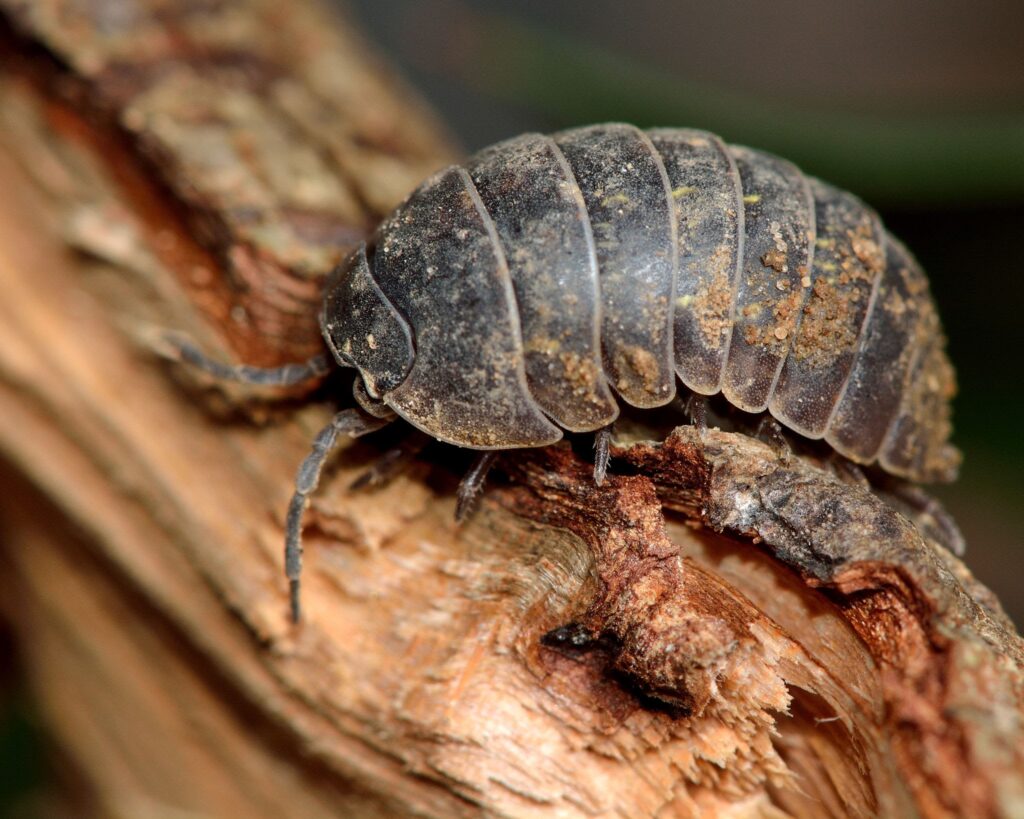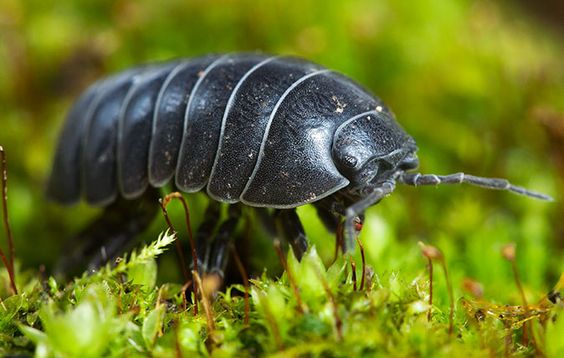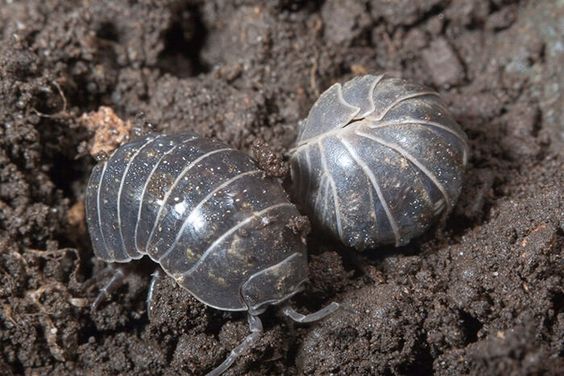Oniscidae, also known as woodlice or roly-poly bugs, are a family of terrestrial crustaceans that belong to the order Isopoda. They are commonly found in damp environments, such as leaf litter and rotting wood, and are known for their ability to roll into a tight ball as a defense mechanism. These crustaceans have a wide range of habitat, can be found in many parts of the world, such as North America, Europe, Asia, and Australia, they have different common names such as pill bugs, sow bugs, and armadillo bugs.

Woodlice play an important role in the ecosystem, as they are important decomposers, breaking down dead plant material and returning important nutrients to the soil. They are also a valuable food source for many animals, such as birds, amphibians, and reptiles. Their ability to break down the dead plant material and their capability to return essential nutrient to the soil, make them an important part of the ecosystem.
Recently, scientists have discovered that woodlice can also be used to remove harmful heavy metals from the soil. These metals, such as mercury, cadmium, and lead, can have negative effects on the environment and human health if present in large amounts. Woodlice are able to tolerate high levels of these metals and can accumulate them in their bodies without being harmed. The process by which woodlice do this, is called bioaccumulation. This means that woodlice consume the metals that are present in the soil through their diet and store them in their bodies.


By using woodlice to remove these metals from the soil, scientists hope to create a sustainable and natural way to clean up contaminated areas. This process is called phytoremediation, which means using plants, microbes, and animals to clean the environment. Phytoremediation using woodlice is a cost-effective and eco-friendly alternative to traditional methods of cleaning up contaminated soil, such as excavation and disposal of the soil.
In summary, woodlice are an important part of the ecosystem as they play a crucial role in decomposition and are also a food source for many animals. They also have an added benefit of bioaccumulation, the ability to remove harmful heavy metals from the soil. This makes them a valuable tool in environmental clean-up efforts. Phytoremediation using woodlice is an efficient and sustainable way to clean up contaminated areas, making them an essential tool in the fight against pollution.

Here are some facts about Oniscidae:
- Oniscidae is a family of terrestrial crustaceans also known as woodlice or roly-poly bugs.
- There are over 3,000 species of woodlice, which can be found in different parts of the world, including North America, Europe, Asia, and Australia.
- They are commonly found in damp environments, such as leaf litters and rotting wood.
- Woodlice are known for their ability to roll into a tight ball as a defense mechanism.
- They play an important role in the ecosystem as decomposers, breaking down dead plant material and returning important nutrients to the soil.
- Woodlice are also a valuable food source for many animals, such as birds, amphibians, and reptiles.
- They can tolerate high levels of heavy metals and can accumulate them in their bodies without being harmed.
- They are being studied for their ability to remove heavy metals from the soil in a process called Phytoremediation.
- The most common species are known as the pill bugs or sow bugs.
- Woodlice are arthropods and have an exoskeleton that they shed periodically.
- They have between 7 to 14 segments, depending on the species.
- Their body is divided in two regions, the head and the thorax, which are fused together and form a cephalothorax.
- They have two pair of antennae, a pair of mandibles, and three pair of maxillae.
- Woodlice are hermaphrodites, that means they have both male and female reproductive organs, but they reproduce with the help of a mating partner.
- They lay eggs that can be found in a capsule called an ootheca.
Please keep in mind that not all species in the Oniscidae family are the same, so some of these facts may not be generalizable to all species of Woodlice.Regenerate response

